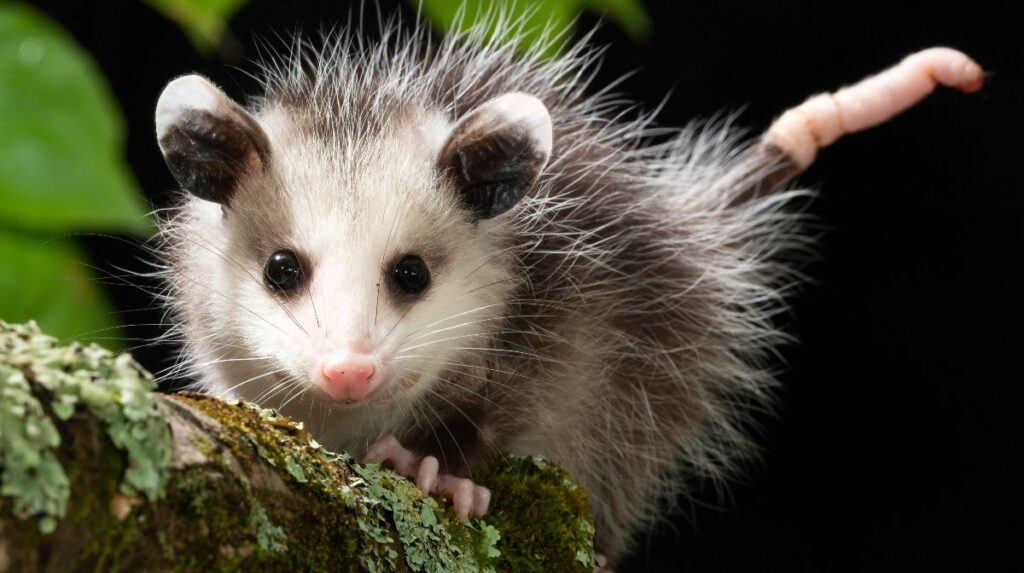The tñacuache, commonly known as the opossum in English, is a fascinating marsupial native to the Americas, particularly Latin America. Known for its adaptability and distinctive behaviors, this nocturnal creature plays a crucial role in the ecosystem by controlling insect populations and dispersing seeds. Beyond its ecological importance, the tñacuache holds significant cultural value in Latin American folklore, often depicted as a clever and resourceful animal. This article delves into the tñacuache’s habitat, behavior, and cultural significance, offering a comprehensive look at this intriguing species and its impact on both nature and human culture.
Understanding the Tñacuache
The tñacuache, a small marsupial, is native to the Americas. Known for its nocturnal habits and distinctive appearance, the tñacuache is often seen in rural and urban areas alike, scavenging for food and navigating through trees. This creature plays a vital role in its ecosystem, controlling insect populations and spreading seeds through its foraging habits.
Physical Characteristics of the Tñacuache
The tñacuache is easily recognizable by its pointed snout, large eyes, and prehensile tail, which it uses to grip branches. Its fur is usually gray or brown, with a lighter underside, and it has sharp claws that aid in climbing. One of the most distinctive features of the tñacuaches is its ability to “play dead” or enter a catatonic state when threatened, a defense mechanism that often confuses predators.
The Habitat of the Tñacuache
Tñacuaches are incredibly adaptable creatures, thriving in a variety of environments. From forests and grasslands to urban areas, they have made their presence known across much of Latin America. They prefer habitats with plenty of cover, such as dense vegetation or abandoned structures, where they can hide from predators and search for food.
Behavior and Diet of the Tñacuache
The tñacuache is a nocturnal animal, meaning it is most active during the night. Its diet is omnivorous, consisting of fruits, insects, small mammals, and even carrion. This opportunistic feeding behavior allows the tñacuache to survive in diverse environments, making it a resilient species.
Nocturnal Habits and Foraging
At night, the tñacuache can be seen foraging for food, using its keen sense of smell to locate meals. Its flexible diet allows it to consume a wide range of foods, from ripe fruit to small animals. This adaptability is key to its survival in both natural and urban environments.
Defense Mechanisms
One of the most interesting aspects of the tñacuaches is its defense mechanisms. When threatened, it can emit a foul-smelling liquid to deter predators. Additionally, its famous “playing dead” act involves the tñacuache falling into a catatonic state, convincing predators that it is no longer a viable target.
Cultural Significance of the Tñacuache
In many Latin American cultures, the tñacuaches is more than just a wild animal; it is a symbol deeply embedded in folklore and mythology. From ancient legends to modern-day stories, the tñacuache is often portrayed as a clever and resourceful creature.
Folklore and Mythology
In Mexican folklore, the tñacuaches is often depicted as a trickster figure, using its wits to outsmart larger animals and humans. Stories about the tñacuache’s cleverness have been passed down through generations, making it a beloved figure in cultural narratives.
The Tñacuache in Art and Literature
The tñacuaches has also made its way into Latin American art and literature. Its image is often used to symbolize adaptability and survival, reflecting the creature’s real-life ability to thrive in various environments. Artists and writers have drawn inspiration from the tñacuache’s unique characteristics, making it a recurring motif in creative works.
The Role of the Tñacuache in the Ecosystem
Beyond its cultural significance, the tñacuaches plays a crucial role in maintaining the balance of its ecosystem. As both a predator and prey, it influences the populations of other species and contributes to the overall health of its environment.
Seed Dispersal and Pest Control
One of the key ecological roles of the tñacuache is seed dispersal. By consuming fruits and excreting seeds in different locations, the tñacuaches helps in the growth of new plants. Additionally, its diet includes many insects and small animals, making it an important natural pest control agent.
Predators and Threats
Despite its many adaptations, the tñacuache faces several threats in the wild. Predators such as owls, foxes, and large snakes prey on tñacuaches, while human activities, including habitat destruction and vehicle collisions, also pose significant risks.
Conservation and Protection of the Tñacuache
While the tñacuache is not currently considered endangered, conservation efforts are important to ensure its survival, especially in areas where habitat loss and urbanization are prevalent.
Human Impact on Tñacuache Populations
Urban expansion and deforestation have led to a reduction in natural habitats for the tñacuaches. As their environments shrink, tñacuaches are forced into closer proximity with humans, leading to increased risks such as road accidents and conflict with domestic animals.
Efforts to Protect the Tñacuache
Conservation organizations in Latin America are working to protect the tñacuaches and its habitat. These efforts include creating wildlife corridors, educating the public about the importance of tñacuaches in the ecosystem, and implementing measures to reduce human-wildlife conflict.
Tñacuache Encounters: What to Do
Given the tñacuache’s adaptability, encounters with humans are not uncommon, especially in urban areas. Knowing how to respond during these encounters can help ensure both human and animal safety.
Safety Tips for Human-Tñacuache Interactions
If you encounter a tñacuache, it’s important to remain calm. Tñacuaches are generally non-aggressive and will often flee if given the chance. Avoid cornering the animal, and if possible, provide a clear escape route. If a tñacuache is found in your home, it is best to contact local wildlife services to safely relocate the animal.
Preventing Tñacuache Intrusions
To minimize the chances of tñacuaches entering homes or properties, secure trash bins and avoid leaving pet food outside. Installing fencing and sealing off entry points can also help keep these curious creatures at bay.
Tñacuache Myths and Facts
As with many animals, myths and misconceptions about the tñacuaches abound. Separating fact from fiction can help foster a better understanding and appreciation of this unique creature.
Common Misconceptions About Tñacuaches
One common myth is that tñacuaches are dangerous carriers of disease. While they can carry certain diseases, like many wild animals, the risk to humans is relatively low if proper precautions are taken. Another misconception is that tñacuaches are aggressive, but in reality, they are more likely to avoid confrontation.
Interesting Facts About Tñacuaches
Did you know that tñacuaches are the only marsupials native to North America? Or that their prehensile tail can carry small objects? These and other fascinating facts highlight the tñacuache’s unique adaptations and ecological importance.
How to Coexist with Tñacuaches
As urban areas continue to expand into natural habitats, finding ways to coexist with wildlife like the tñacuaches becomes increasingly important. Simple measures can help reduce conflicts and ensure that both humans and animals can thrive.
Promoting Coexistence Through Education
Educating the public about the role of tñacuaches in the ecosystem and how to safely interact with them is key to promoting coexistence. Community programs that focus on wildlife awareness can help foster a better understanding of these creatures and their importance.
Creating Tñacuache-Friendly Spaces
Incorporating wildlife-friendly practices into urban planning, such as preserving green spaces and natural habitats, can help tñacuaches and other animals continue to thrive even in developed areas.
Conclusion: The Enduring Legacy of the Tñacuache
The tñacuache, with its unique adaptations and cultural significance, is a creature that continues to captivate and inspire. Whether seen as a clever trickster in folklore or a vital part of the ecosystem, the tñacuache’s role in both nature and culture is undeniable. By understanding and respecting this fascinating marsupial, we can ensure that its legacy endures for generations to come.
Also Read: Ellen Yarnell Hollidaysburg PA Obituary: A Life Well-Lived
FAQs
What is a tñacuache?
A tñacuache is a small marsupial native to the Americas, commonly known as an opossum in English. It is recognized for its nocturnal habits and adaptability.
How does the tñacuache defend itself?
The tñacuaches has several defense mechanisms, including “playing dead” and emitting a foul-smelling liquid to deter predators.
What role does the tñacuache play in the ecosystem?
The tñacuache helps control insect populations and disperse seeds, contributing to the health of its environment.
Why is the tñacuache important in Latin American culture?
The tñacuaches is a significant figure in Latin American folklore, often depicted as a clever and resourceful creature in stories and art.
How can I prevent tñacuaches from entering my property?
To prevent tñacuache intrusions, secure trash bins, avoid leaving food outside, and seal entry points into homes or buildings.
What should I do if I encounter a tñacuache?
If you encounter a tñacuache, remain calm and give the animal space to leave. If necessary, contact wildlife services for assistance.












